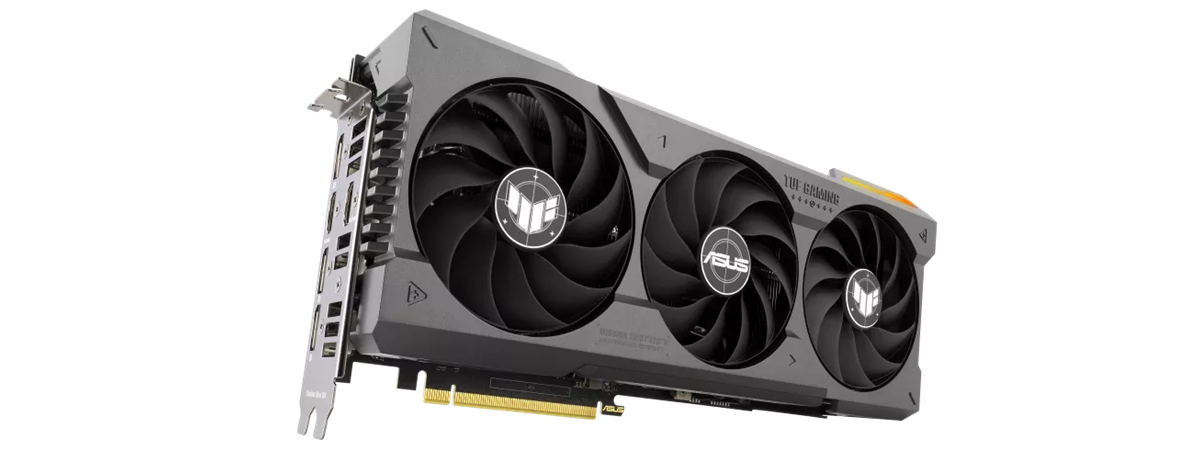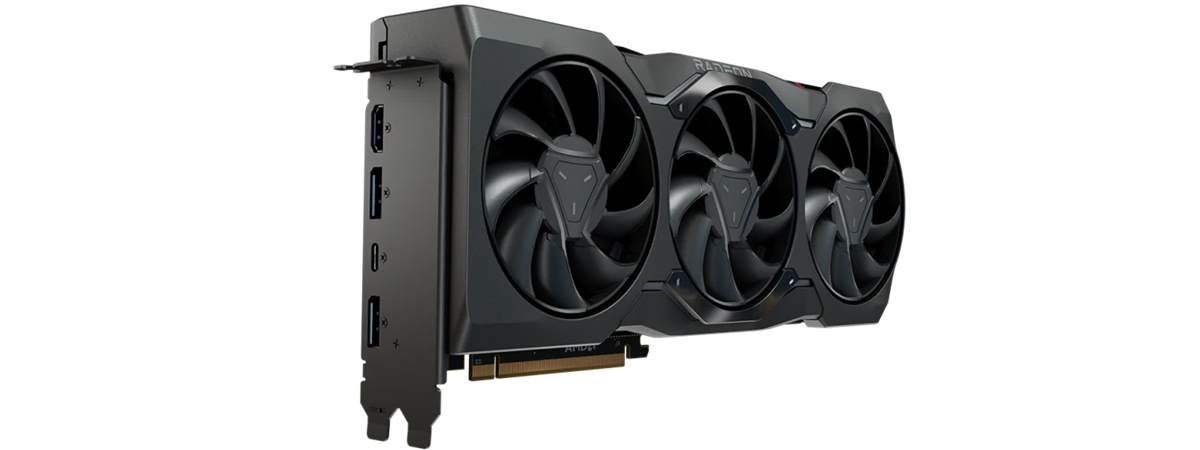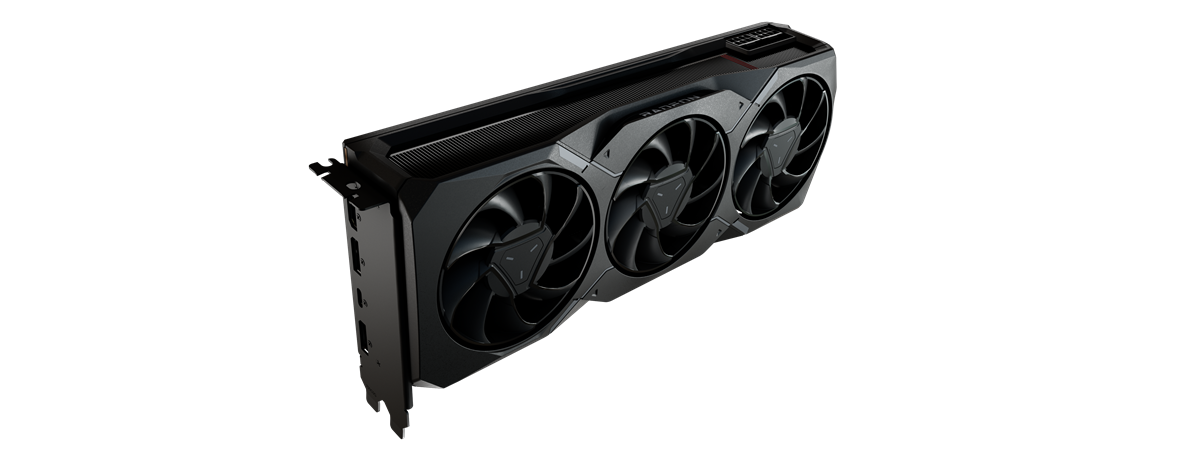
AMD officially launched its new series of RDNA 3-based graphics cards: the AMD Radeon RX 7900 XTX and the AMD Radeon RX 7900 XT. Both are advertised to deliver significant performance improvements compared to the previous Radeon RX 6000 series based on RDNA 2, and both appear to be excellent choices for even the most demanding gamers out there. During the last couple of days, I tested the AMD Radeon RX 7900 XT, and after looking at what it has to offer and benchmarking it in some of my favorite games, I’d like to share my findings with you. Do you want to know how fast the AMD Radeon RX 7900 XT is in real life? Then go ahead and read this review:
AMD Radeon RX 7900 XT: Who is it good for?
The AMD Radeon RX 7900 XT graphics card is one of the best choices if you want:
- To play any game at high graphics quality and high framerates
- A powerful GPU for a price that’s more reasonable than what the competition asks
- A significant upgrade from the previous AMD Radeon RX 6000 series
Pros and cons
There are many positives about the AMD Radeon RX 7900 XT:
- Based on AMD’s RDNA 3 architecture, it offers top-notch performance in any game, even on ultra settings
- It has 20 GB of fast GDDR6 memory and a huge bandwidth of 2912 GB/s
- It has more Ray Accelerators and better ray-tracing performance than previous-generation Radeon GPUs
- Its cooling system is efficient and silent
- It uses two standard 8-pin power connectors, and its power consumption is not over-the-top
- Includes DisplayPort 2.1, which allows for much faster refresh rates than DisplayPort 1.4
On the negative side of things, the AMD Radeon RX 7900 XT:
- Is still behind NVIDIA in terms of hardware ray tracing performance

Verdict
The AMD Radeon RX 7900 XT is a great example of what a generational change should look like. AMD’s RDNA 3 architecture moves on from a traditional graphics chipset design to a new chiplet design and manages to improve performance significantly. After testing and benchmarking the AMD Radeon RX 7900 XT in several games, I can conclude with enough certainty that this is one of the best graphics cards you can get today. The framerates it manages are excellent in both 1080p and 1440p resolutions and on the highest graphics settings available. If you’re a gamer and want a first-class GPU that can handle anything you throw at it but aren’t willing to pay the higher prices that NVIDIA asks for its similar cards, you should take a look at the AMD Radeon RX 7900 XT. After all, the closest competitor from NVIDIA, the GeForce RTX 4080, is about 300 USD more. Cost is key here, and the AMD Radeon RX 7900 XT is a prime choice for any enthusiastic gamer right now, at least in my opinion.
Unboxing the AMD Radeon RX 7900 XT
The AMD Radeon RX 7900 XT graphics card arrives in a relatively large box made of premium cardboard, with a very attractive design. It’s all black and dark gray, and the stylized image of the GPU on the top cover is enticing.
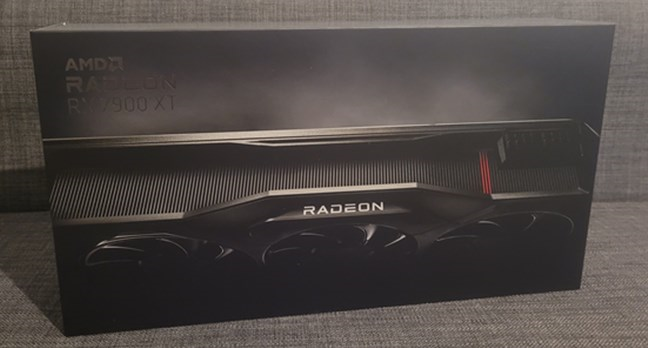
The box of the AMD Radeon RX 7900 XT
There are no technical specs printed on the package, except for a few details on the back about the AMD Adrenalin Software. Opening the box reveals the same minimalistic approach but also AMD’s care for details. The Radeon RX 7900 XT looks amazing at first glance.
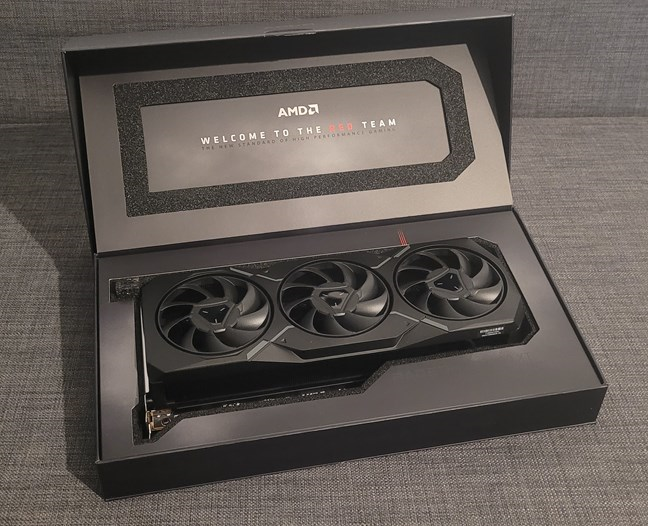
Unboxing the AMD Radeon RX 7900 XT
The contents of the box are also kept simple: you get the graphics card, a user manual, and a note welcoming you to the Red Team.
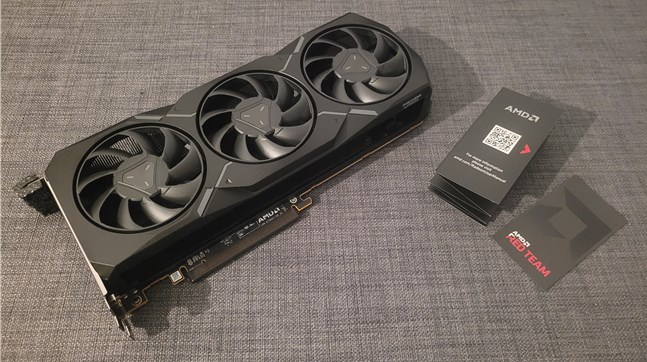
AMD Radeon RX 7900 XT: What's inside the box
The package of the AMD Radeon RX 7900 XT video card is minimalist, but everything looks awesome, outside and inside.
Design and hardware specifications
The Radeon RX 7900 XT is based on AMD’s latest Navi 31 GPU that uses RDNA 3.0 architecture and is built on a 5-nanometer production process. This graphics processing unit has a die size of about 300 mm² and a transistor count of 57,7 billion. No matter how you look at it, this is a very large chip. Furthermore, the RDNA 3 architecture is a first in the world of graphics, as it’s the only one until now using chiplet technology. What does that mean? Well, the GPU doesn’t have only one die where everything’s packed together, but rather multiple dies: a GCD (Graphics Compute Die) and up to six MCDs (Memory Cache Dies). The first one is built on a 5nm process, it holds the core GPU engine and is in charge of all the calculations required by the graphics card. The additional dies, MCDs, are built on a 6nm manufacturing process and are responsible for the GDDR6 RAM interface and AMD’s second-generation Infinity Cache.
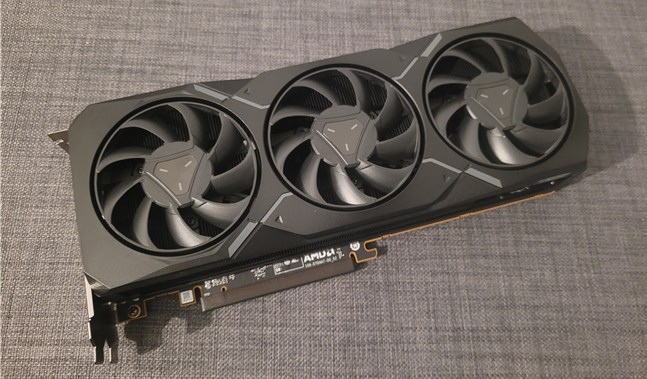
The AMD Radeon RX 7900 XT has three fans
Speaking of which, the 2nd generation AMD Infinity Cache allows the graphics card to get fast data access and massively increase bandwidth. Thanks to its 80 MB of Infinity Cache and a 320-bit memory bus with 20 GB of GDDR6 RAM, the AMD Radeon RX 7900 XT can offer a huge bandwidth of no more, no less than 2912 GB/s.
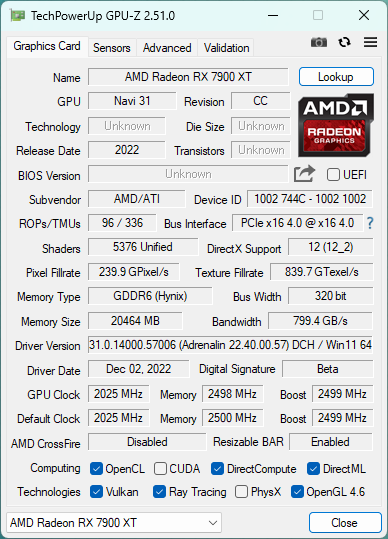
Details about the AMD Radeon RX 7900 XT shown by GPU-Z
To continue, the AMD Radeon Rx 7900 XT works on PCI Express 4.0, and the Navi 31 GPU supports DirectX 12 Ultimate (Feature Level 12_2) and OpenCL version 2.1. For ray tracing, the graphics card contains 84 (2nd Generation) hardware Ray Accelerators, and it can also use AMD’s FidelityFX Super Resolution 2 (FSR 2) upscaling technology. FSR 2 helps boost framerates in compatible games by using frame color, depth, and motion vectors, as well as information from past frames, to create high-quality new upscaled frames.
Now that we know a bit more about the insides of this GPU, what about the physical aspects of the AMD Radeon RX 7900 XT? Measuring 276 millimeters (10.87 inches) in length, the card is relatively long but not so long that it can’t fit in any standard desktop computer case. And, as already shown in this review’s previous pictures, it accommodates three fans. In terms of vertical dimensions, the graphics card occupies 2.5 slots.
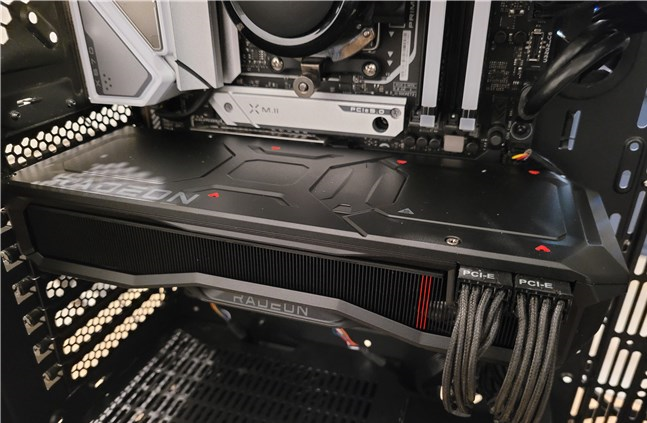
The AMD Radeon RX 7900 XT occupies 2.5 slots
A thing I like about AMD’s design choices for this graphics card is the fact that it’s all black, from fans to the body and to the backplate on top of the card. While I do tend to approve of RGB lights, in this case, the GPU looks better without them.
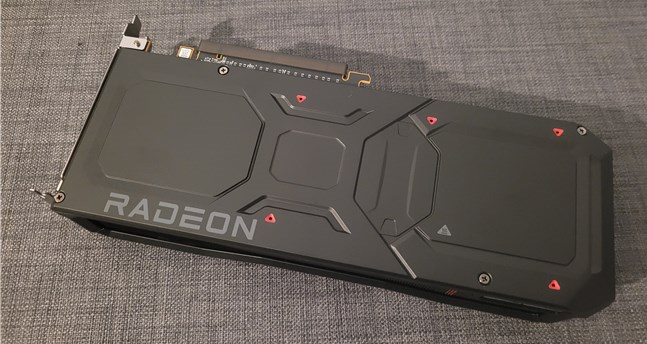
The metal backplate of the AMD Radeon RX 7900 XT
The AMD Radeon RX 7900 XT comes with two DisplayPort(s) (2.1), an HDMI (2.1), and a USB Type-C port. Depending on the resolution and refresh rate of your displays, you can connect to up to four displays simultaneously. What’s noteworthy here is the inclusion of DisplayPort version 2.1, which is available only on Radeon RX 7000 series graphics cards. NVIDIA, for instance, is still using DisplayPort 1.4 even on its highest-end RTX GeForce 4090! Compared to the old DisplayPort 1.4, the 2.1 revision allows for a maximum refresh rate of up to 900 Hz in 1440p resolution, 480 Hz in 4K, and 165 Hz in 8K!
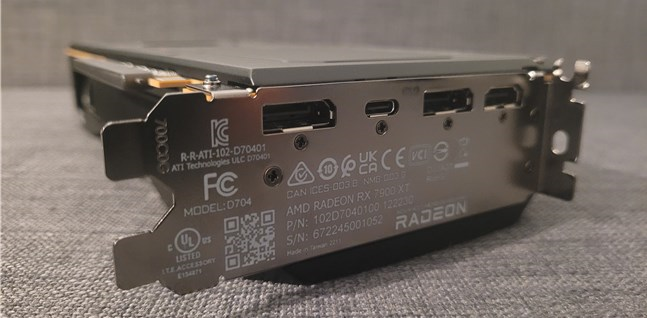
Output ports on the AMD Radeon RX 7900 XT
Another positive aspect of the AMD Radeon RX 7900 XT is that it draws its additional power via two standard 8-pin PCIe connectors, unlike NVIDIA’s RTX 4000 series cards, which need a 16-pin connector. Moreover, the power consumption of the AMD Radeon RX 7900 XT graphics card is not over the top either. AMD says that the TBP (Total Board Power) for this card is 315 Watts and recommends a power supply of 750 Watts.
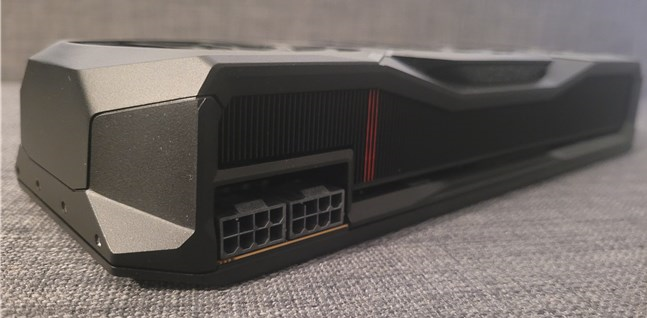
AMD Radeon RX 7900 XT uses 2 standard 8-pin power connectors
While I’ve only just scratched the surface in terms of features and specs of this graphics card, you can delve deeper into its ins and outs on the official webpage: AMD Radeon RX 7900 XT Tech Specs.
AMD Radeon RX 7900 XT - Gaming benchmarks
To get a clear idea of how powerful the AMD Radeon RX 7900 XT graphics card is, I put it to the test in a couple of games. To benchmark it, I used a desktop computer with the following hardware and software components:
- Motherboard: ASUS Prime X670E-Pro WiFi
- Processor: AMD Ryzen 9 7900X
- CPU cooler: Cooler Master MasterLiquid ML360R RGB
- Memory: Kingston Fury Beast RGB DDR5-6000 32GB
- Storage: Kingston KC3000 NVMe PCIe 4.0 SSD 2TB
- Monitor: ASUS ROG Strix XG32VQ Curved Gaming Monitor
- Power Supply Unit: ASUS ROG Thor 850W Platinum
- Operating System: Windows 11 Pro version 22H2
Also, note that I benchmarked all the next games using the highest possible graphics settings but without enabling ray tracing or AMD FSR.
I started with CyberPunk 2077, a game that looks amazing but demands a lot of performance from the computer you run it on, especially in terms of graphics capabilities. The PC I assembled with the AMD Radeon RX 7900 XT managed to offer very high framerates in both 1080p and 1440p resolutions. Using the Ultra graphics preset, I got 174 fps in 1080p and 120 fps in 1440p.
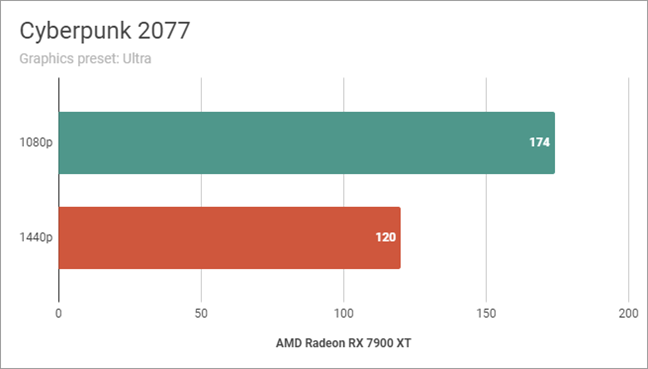
AMD Radeon RX 7900 XT: Benchmarks results in Cyberpunk 2077
The second game I tested with the AMD Radeon RX 7900 XT graphics card was Shadow of the Tomb Raider. Although a couple of years old, it’s still a beautiful game that requires a powerful gaming machine if you want to play it at maxed graphics quality. As you can see in the next chart, the average framerates I measured were very high. On the Highest quality preset, I got 251 fps in 1080p and 202 fps in 1440p.
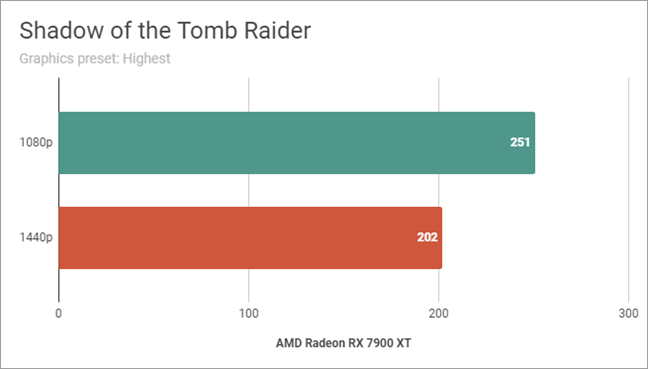
AMD Radeon RX 7900 XT: Benchmarks results in Shadow of the Tomb Raider
Metro Exodus is yet another game that needs powerful hardware if you want to enjoy its best graphics quality. The AMD Radeon RX 7900 XT graphics card handled it quite effortlessly, managing to render 160 frames per second on average in 1080p, and 130 fps in 1440p resolution.
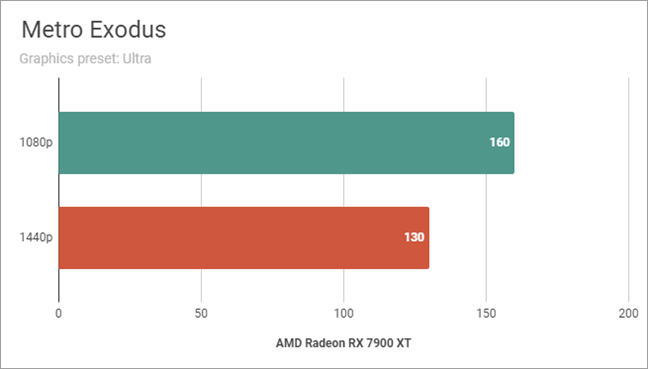
AMD Radeon RX 7900 XT: Benchmarks results in Metro Exodus
Next, I tested the AMD Radeon RX 7900 XT in Horizon Zero Dawn. This game also comes with exquisite visuals that, evidently, need powerful hardware to run well. Yet again, the AMD Radeon RX 7900 XT managed to perform admirably, even if I used the Favor Quality graphics preset. I measured an average framerate of 205 fps in 1080p resolution and 177 fps in 1440p.
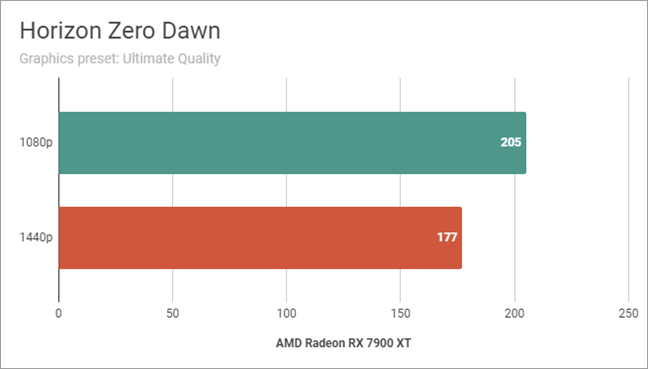
AMD Radeon RX 7900 XT: Benchmarks results in Horizon Zero Dawn
The last game I benchmarked was Ubisoft’s Assassin’s Creed Valhalla, one of the most demanding games to date. Setting it to the Ultra High graphics quality preset, I got 183 fps in 1080p and 147 frames per second in 1440p.
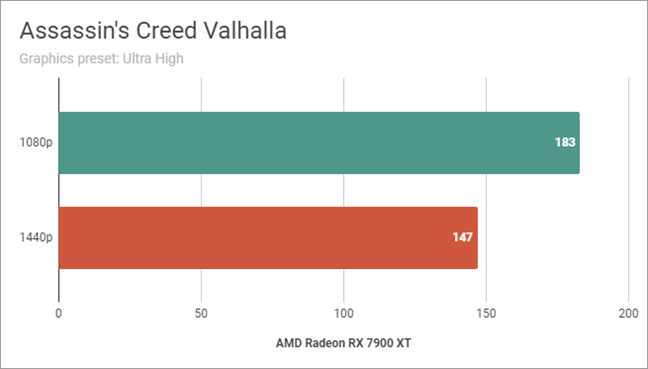
AMD Radeon RX 7900 XT: Benchmarks results in Assassin's Creed Valhalla
Next, I wanted to see how the AMD Radeon RX 7900 XT fares in two specialized gaming benchmarks: 3DMark’s Time Spy and Port Royale. As you can see in the chart below, the graphics card managed extraordinary results: 26039 points in Time Spy (better than 99% of all results) and 13727 points in Port Royale (better than 85% of all results).
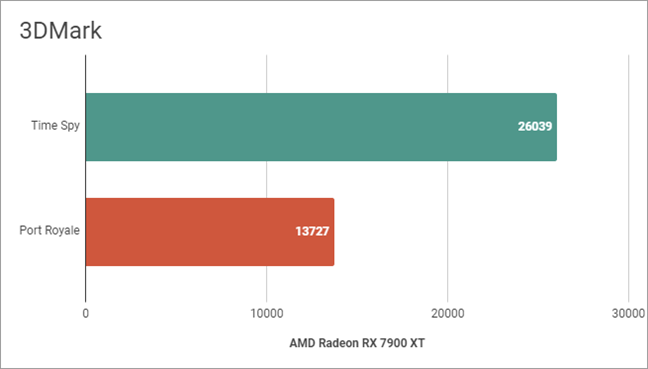
AMD Radeon RX 7900 XT: Benchmarks results in 3DMark
While running the benchmarks, I also kept an eye on the amount of power drawn by the AMD Radeon RX 7900 XT video card, as well as its temperatures. Furthermore, I also checked the maximum values reached while running FurMark, and what I found was that this graphics card manages to stay cool, under 80 degrees Celsius, but can draw up to 310 Watts. A 750 Watts power supply is clearly required if you also have other powerful components such as a new AMD Ryzen 7000 or Intel Raptor Lake processor.
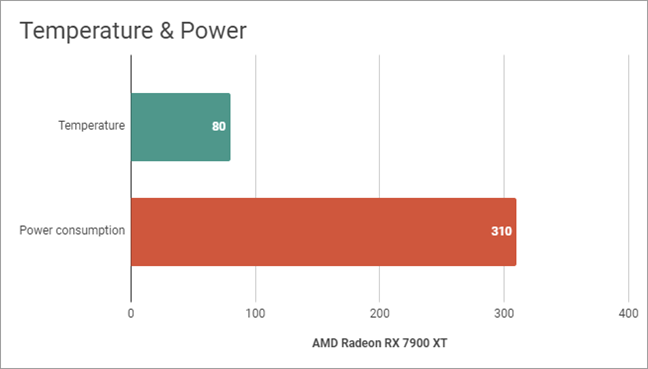
AMD Radeon RX 7900 XT: Temperature and power draw
The AMD Radeon RX 7900 XT is one of the best high-end graphics cards you can get. Second in line only to the AMD Radeon RX 7900 XTX, this card manages to deliver excellent performance in any game and at any resolution. Taking into account its price and features, I’d say it’s a great deal for anyone looking to play games at maximum graphics quality and high framerates.
What’s your opinion about the AMD Radeon RX 7900 XT?
Now you know what the AMD Radeon RX 7900 XT graphics card can do and what novelties it brings to the world of gaming. What’s your opinion about it? Do you think it’s a better choice in terms of price per performance than what the competition (NVIDIA) has to offer right now? Let me know in the comments section below.


 12.12.2022
12.12.2022 